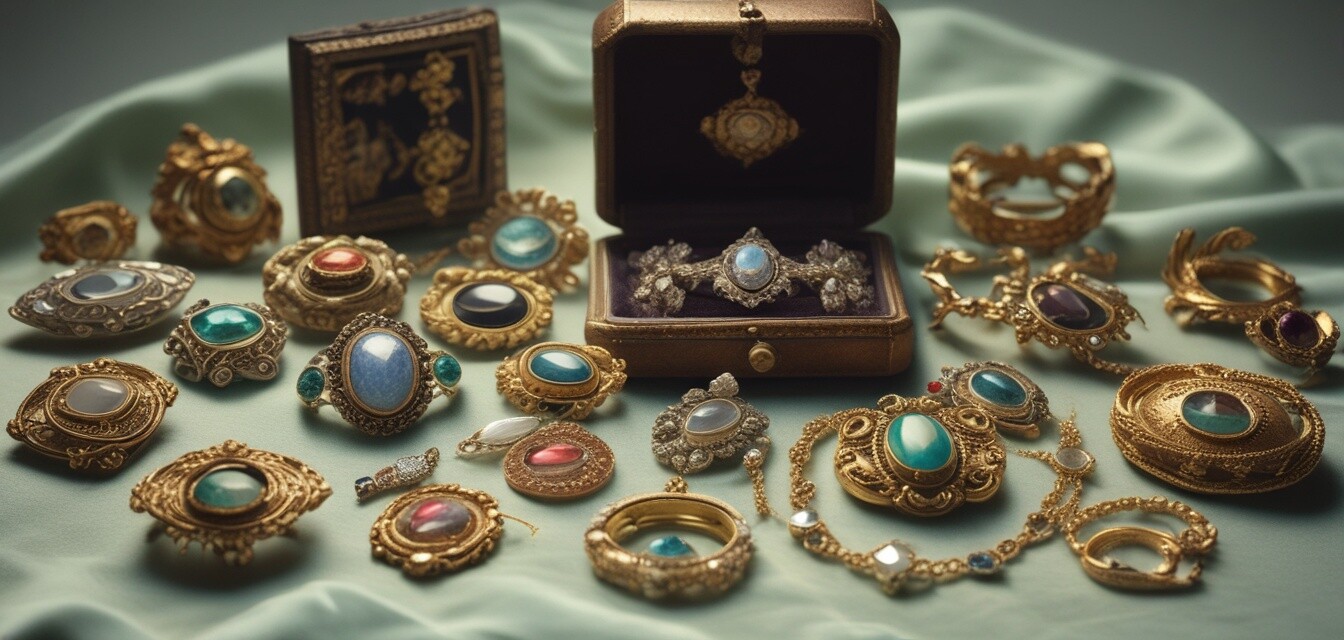
Understanding the Market for Antique Jewelry
Key Takeaways
- Antique jewelry's value is influenced by factors such as age, craftsmanship, and materials.
- Knowledge of hallmark markings and authenticating pieces is essential for collectors.
- Sourcing antique jewelry involves understanding credible dealers and auction practices.
- Proper maintenance and care can preserve the longevity and value of antique pieces.
- Engaging with expert insights can enhance your collecting experience.
The antique jewelry market is an alluring domain for collectors and enthusiasts alike. With pieces that tell stories of bygone eras, investing in and sourcing antique jewelry can be both rewarding and intricate. This guide aims to provide essential knowledge covering valuation factors, buying tips, and sourcing strategies tailored for individuals passionate about antique jewelry.
Understanding Antique Jewelry Valuation
When evaluating antique jewelry, several factors come into play that can affect its price and desirability. Key aspects include:
| Factor | Description |
|---|---|
| Age | Jewelry over 100 years old is typically classified as antique. The era it represents (Georgian, Victorian, Edwardian, etc.) can significantly impact value. |
| Craftsmanship | Handcrafted pieces with fine detailing are often valued higher than mass-produced items. |
| Materials | The quality and type of materials used, such as precious metals and gemstones, directly affect value. |
| Provenance | Documentation of a piece's history and ownership can enhance its appeal and value. |
| Condition | Well-preserved pieces with minimal wear and tear command higher prices. |
Buying Tips for Antique Jewelry
Entering the antique jewelry market can be daunting, but with the right strategies, you can make informed decisions. Here are some helpful tips:
Beginner's Tips
- Educate Yourself: Familiarize yourself with the different styles and periods of antique jewelry.
- Seek Expertise: Consult with gemologists or antique appraisers for insights before making a purchase.
- Inspect Thoroughly: Always inspect pieces for signs of repairs, alterations, or damage.
- Buy from Reputable Dealers: Ensure that you purchase from established sources to avoid fakes. Consider exploring resources on buying guides to empower yourself with knowledge.
- Learn About Hallmarks: Understanding hallmark markings can help authenticate pieces and ascertain their origin.
Sourcing Antique Jewelry
Sourcing antique jewelry can be an adventure. Here are some paths you might consider:
- Antique Shops: Local antique shops often have a varied selection, and shop owners may provide historical insights.
- Estate Sales and Auctions: These venues can offer unique finds at competitive prices.
- Online Marketplaces: Websites specializing in antique jewelry allow for browsing a wider selection but be cautious of authenticity.
- Gem and Jewelry Shows: Attending these events can connect you with dealers and fellow enthusiasts.
- Networking: Join antique jewelry forums or clubs for leads on sourcing opportunities and insights.
Maintaining the Value of Antique Jewelry
Maintenance plays a pivotal role in preserving the beauty and value of your antique jewelry. Follow these steps:
- Regular Cleaning: Clean your jewelry gently with a soft cloth and avoid harsh chemicals.
- Proper Storage: Store pieces in a safe, dry place, preferably in a fabric pouch or a lined jewelry box.
- Professional Maintenance: Schedule routine check-ups with a jeweler to assess settings and repairs.
- Avoid Wearing in Risky Situations: Take off valuable pieces during activities that could cause damage.
Expert Insights and Continuing Education
Engaging with experts and ongoing learning can greatly enhance your journey in the antique jewelry market. Follow our Expert Insights blog category for more tips and advice from professionals in the field.
Pros
- Unique and historically significant pieces.
- Potential for investment appreciation.
- Rich storytelling aspect of each piece.
- Variety of styles and designs from different eras.
Cons
- Can be expensive depending on rarity and condition.
- Potential difficulty in authenticating items.
- Requires ongoing education to navigate the market.
- Risk of purchasing replicas or fakes.